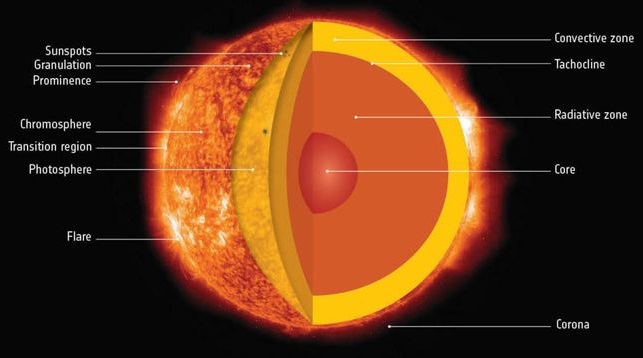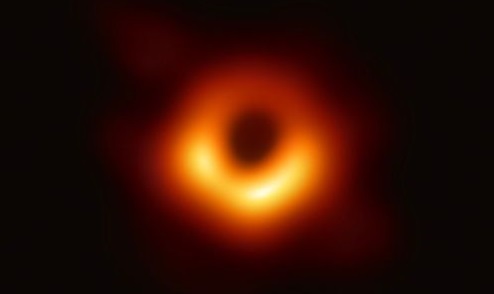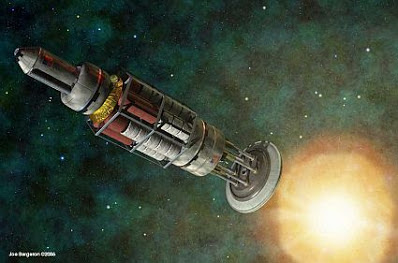Nowadays, we are obsessed with the idea that we need to “produce energy.” That is, of course, a wrong way to express the concept. Energy can’t be produced: the first principle of thermodynamics tells us that. Energy can only be transformed from a kind of energy to another. And even that is not correct. You can only transform energy going in a specific direction, it is dictated by the second principle of thermodynamics. All you can do, and you can do no more, is to transform high energy potentials into low energy potentials. This is called “potential dissipation.”
An example: what we do when we claim that we “produce energy” is, mostly, to combine atmospheric oxygen with those long-chain carbon and hydrogen molecules that we call “fossil fuels,” stored inside Earth’s crust. The dissipation process starts with the chemical energy potential stored in crude oil (or gas, or coal), then it goes on in steps, always downhill, until we are left with low-temperature heat, plus water and carbon dioxide. What we covet from this transformation is heat that we then use to run engines and do more things. These intermediate steps we can call “dissipative structures,” a term proposed for the first time by Ilya Prigogine.
Can we go back? It is possible, but we can’t trick nature and go against the second principle. It is a steep uphill road that of recombining water and carbon dioxide to form again long-chain carbon molecules. We can only achieve that by dissipating an even higher potential, solar light. It is done all the time by plants, it is called “photosynthesis.” It is the process that, long ago, created the carbon compounds we are so busy burning nowadays.
This is what makes us “star parasites.” We, like the whole Earth’s ecosystem, live by dissipating the potential of our star, the sun, and using the energy flow to build dissipative structures: plants, animals, and everything human-made. More correctly, we should say that we are “commensals,” a technical term for those parasites that do not compete with their host for resources. From the viewpoint of the star, light is just waste discarded into space. We just intersect a minimal fraction of it and we re-emit it in a slightly lower potential form, infrared light.
But how about the Sun? Is it a parasite of anything? Not in the same way, but the second principle of thermodynamics holds for the Sun, too. The potential that the Sun is dissipating originated long ago, with the big bang. At that time, an enormous energy potential was accumulated in a very small space. When the big bang came, this energy started being dissipated, a process that has been lasting for 14 billion years and is continuing now. As the universe expands, it cools down. Far from the enormous temperatures of its early life, the universe is now down to just 2.725 degrees Kelvin — close to the absolute zero. In terms of radiative potential, it is by now dead. Too cold to create new dissipative structures.
But the universe can still create dissipative structures because matter can accumulate into gravity pits. These accumulations concentrate gravitational energy, creating new forms of potential dissipation. Stars are formed by accumulating a vast mass of interstellar dust in a relatively small space. Eventually, a star reaches conditions of temperature and pressure so high that it can start another process of dissipation, turning matter into energy. It is the fusion of hydrogen nuclei into helium ones, a process that, as far as we know, can happen only inside the depth of star cores. It is what makes us star parasites. There are surely other carbon-based lifeforms that do the same around other stars of our galaxy and other galaxies.
(image from ESA).

Hydrogen fusion is not the only large-scale energy dissipation process in the universe. There is a sort of “trophic chain” out there, with entities that can be seen as existing at higher trophic levels. Black holes are predators that can devour anything that comes close to them, including stars, and turn it into more internal matter. Neutron stars can be eaten by black holes, but they can eat stars, too.
Stars themselves have a life of their own. Most of them tend to become brighter and larger as they get older and consume their hydrogen stock. If they are very large, they end their life with the spectacular explosions called “supernovae.” The remnant may be a neutron star or a black hole. The debris ejected into space will eventually coalesce to form a new star — an “offspring” of the old one. So, stars reproduce but, as far as we know, all the information stored in the old star disappears in the cloud of gas that forms as a result. So, there is no transmission of information from a generation of stars to another and no evolution in the Darwinian sense (*).
The same would seem to be valid for neutron stars, whose destiny is normally to become black holes. Then, black holes are supposed to evaporate over extremely long times by the slow emission of Hawking radiation, again losing all the information that may have been contained inside. (image below from NASA).

That’s not the end of the great trophic chain. There is another energy dissipation mechanism: the decay of heavy radioactive nuclides, uranium and thorium. It generates energy that plays a fundamental role in keeping hot, at about 6000 K, the molten core of our planet. It probably does the same for billions of Earth-like planets of our galaxy. This heat is nearly impossible to detect at interstellar distances because it appears as very low temperatures at the surface, probably around a few tens of degrees K. Nevertheless, compared with the background temperature of the universe, Earth-like planets shine.
The decay of heavy nuclides is slow and not very spectacular, but it is fundamental for carbon-based life. A geologically active nucleus generates enough heat to keep the inner layers of Earth hot enough to create the structures we call “hydrothermal vents” at mid-ocean ridges. It is believed that life started at these undersea vents exploiting geothermal energy much before it ventured to the surface and learned how to exploit solar light. Then, life needs a constant supply of carbon dioxide, which is provided by outgassing from the hot mantle. A cold, solid nucleus would not be able to outgas anything and, in such case, the carbon dioxide in the atmosphere would be consumed by reacting with surface silicates and disappear in a few million years at most. A hot inner Earth doesn’t just provide CO2 by outgassing. It actively controls its atmospheric concentration by removing carbon by silicate erosion and transporting it to the mantle by the subduction process that takes place at the edges of the crustal plates. And subduction can happen only because of the presence of convective currents in the semi-molten mantle.
So, no radioactive elements, no life. Or, at least, the lifetime of the ecosphere would be much shorter than it is, probably too short to generate complex, multicellular lifeforms.
There is more about radioactive elements: they have a trick that makes them go off in a burst of rapid energy dissipation. It is the neutron-catalyzed reaction that occurs for a sufficiently high concentration of a “fissile” nuclide. In the whole universe, only one fissile nuclide exists in significant amounts: the 235 isotope of uranium: most uranium and the other long-lived radioactive element, thorium, are not fissile, but “fissionable.” They can undergo fission, but cannot sustain a chain reaction.
Even though U(235) is rare, with its half-life of about 700 million years, in very ancient times it was less rare than it is nowadays. So, geological phenomena could accumulate a sufficiently large amount of it to generate a natural chain reaction. It happened at least once in Earth’s history, some 2 billion years ago in Oklo, in the area we call today “Gabon,” in Africa. Nothing spectacular happened at that time: the chain reaction went on and off several times, generating some heat over a few hundred thousand years. Probably, the place was rich of hot springs at the time, but there were no people who could have enjoyed them. Not even animals existed, they were to appear only one billion and a half years later. So this natural uranium reactor had little or no effect on the ecosystem.
We don’t know if other Oklo-like reactors existed on Earth but, if they existed, they must have been marginal phenomena (even though some people propose the rather improbable theory that the Moon was created in a nuclear explosion). What we know is that, in recent times, the creatures called “humans” managed to process minerals from Earth’s crust in such a way to concentrate heavy nuclei at levels where chain fission could be maintained for a certain time. They even managed to “breed” fissile nuclei out of fissionable ones. The flow of energy created in this way is small, a few percent of the energy that humans are generating from fossil fuels, infinitesimal in comparison to the output of a star. But it is there. Could it become much larger in the future and became a significant mechanisms of energy dissipation in the universe?
It is an especially interesting point because, as far as we know, the only way to run a nuclear chain reaction on a large scale is by having intelligent beings actively control it. We can say that since there is at least one such civilization in the universe (us) and there is no reason to think we are alone. The consequence is that carbon-based sentient beings might use the energy created by fission chain reaction to engage in major feats of planetary engineering and interstellar travel.

Of course, we are not seeing anything like that in the universe. This is the essence of the so-called “Fermi Paradox,” often understood as meaning that humans are the only technological civilization existing in the universe. In a previous post, I argued that the explanation is the result of two conditions. One is that energy production by controlled nuclear fusion is not possible outside stars, so it is not available to planetary civilizations. The other is that the amounts of radioactive elements available in the solar system are too small to provide sufficient energy to sustain a civilization for a long time. Not even fissionable elements are sufficiently abundant to create more that a transient “flare” of energy dissipation that then would rapidly decline before a civilization could engage in a sustained effort of interstellar exploration.
With the fissile/fissionable resources available, humans, or their extrasolar colleagues, could at most engage in a limited, local interstellar exploration program before running out of energy. More than that, we lack the capability to control what we are doing and it is likely that we’ll soon be destroyed by the pollution we ourselves are generating, while at the same time doomed by the depletion of the mineral resources needed to keep civilization going. Or that we’ll blow out ourselves using those chain fission reactions we are so proud of. Fortunately, it seems that some 50 years ago we missed the chance we had to embark in a dangerous and ultimately futile nuclear energy program. Now, it is probably too late to gather the resources that would be necessary. Given the current situation, dreams of galactic empires seem to be a little premature.
If we are lucky, we’ll just fall back to our normal role of star parasites, after having run out of other forms of potentials to dissipate. That might not be such a bad destiny, considering that the flow of solar energy arriving on our planet is several thousand times larger than the flow of primary energy produced nowadays. But solar energy, although abundant, may not be easy to convert into forms that can power a starship.
So, are carbon-based civilizations destined to remain forever stuck to their home planets? Not necessarily. The universe is not static, it keeps changing albeit at a very slow pace and the availability of fissile materials may be different in the future. We saw that all that is happening in the universe nowadays is the result of the dissipation of the original energy of the big bang. Nuclear fission is no exception. The existence of radioactive nuclei is the result of processes believed to take place mainly in supernova explosions, although it seems that large amounts can also be created in the processes called “kilonovae,” the fusion of two neutron stars that generates a black hole. Fissionable nuclei have a half-life of the order of billions of years, so that the universe (14 billion years old) is being progressively enriched with them.
So, maybe there is a threshold at some moment in the future in which Earth-like planets will be normally endowed with sufficiently large resources of radioactive materials that carbon-based lifeforms might be able to engage in the exploration, and maybe even the colonization, of the galaxy. They might even be able to overcome the limitations of planetary resources by scooping heavy nuclides from the dust around neutron stars or black holes. Maybe we need to wait a few billion years but, from the viewpoint of the universe, a few billions of years are nothing.
This kind of reasoning is, of course, very tentative, but surely fascinating. The universe as a dissipation system appears as a thermodynamic machine. And when you deal with a machine, you can’t avoid wondering what is its purpose. Why the universe is the way it is? Why do radioactive elements exist? Why is carbon-based life so dependent on their existence? Why do they exist in the small amounts that we see nowadays? Is the future accumulation of radioactive nuclei planned for some purpose? Are carbon-based civilizations destined to use this energy, someday? Are they supposed to be “filtered” by the danger of the power of nuclear fission? It is a theme that Isaac Asimov already explored in his 1957 short story “The Gentle Vultures.”
Surely, we need to avoid the mistake of the fleas that think that the dog was created for them. But, who knows? The flea God may be more powerful than what we can imagine.
_____________________________
(*) It has been hypothesized that DNA-like structures could exist inside stars, formed by the combination of “cosmic strings” and “magnetic monopoles.” But, for what we can say, these lifeforms cannot move out of their stars and maybe they can’t even perceive the existence of the universe outside. Something similar holds for neutron stars, despite the attempt by Robert Forward in his novel “Dragon’s Egg” (1980) to imagine living beings composed of neutronium. Black holes, then, tend to destroy information and have an extremely long life. Of course, there may exist things we can’t even remotely imagine in the universe but for the time being that seems to be a safe assumption. Incidentally, I went back to read Forward’s novel and I found it incredibly boring. Times are changing and the novel is by now an obsolete art form.